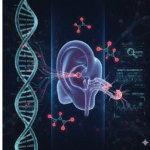Cancer remains one of the most complex and devastating diseases, affecting millions of lives worldwide. While advancements in traditional treatments such as chemotherapy, radiation, and surgery have saved many lives, they often come with significant side effects and limited effectiveness for certain cancers. Immunotherapy, a revolutionary approach that activates the immune system to combat cancer, has emerged as a game-changer in recent years. Among the various tools in immunotherapy, harnessing the nex generation cytokines—small proteins that regulate immune responses—are at the forefront of innovation. This article explores how next-generation cytokines are transforming cancer therapy treatment, offering hope for better efficacy and fewer side effects.
Understanding Cytokines and Their Role in Cancer Therapy
Cytokines are signaling molecules that mediate and regulate immunity, inflammation, and hematopoiesis. Produced by immune cells such as T-cells and macrophages, cytokines play a pivotal role in orchestrating immune responses. They act as messengers, stimulating or suppressing immune cells to maintain balance in the body.

In the context of cancer, cytokines can either promote or suppress tumor growth. For example, pro-inflammatory cytokines such as interleukin-2 (IL-2) and interferon-alpha (IFN-α) can enhance the immune system’s ability to target cancer cells. Conversely, some cytokines, like interleukin-10 (IL-10) and transforming growth factor-beta (TGF-β), may suppress immune responses, enabling tumors to evade detection.
Harnessing cytokines for cancer therapy began in the 1980s with FDA-approved treatments like IL-2 and IFN-α. While these therapies showed promise, they were often associated with severe side effects and limited efficacy, particularly in solid tumors. These challenges paved the way for the development of next-generation cytokines—engineered proteins designed to overcome the limitations of their predecessors.
Challenges with First-Generation Cytokines
Despite their potential, first-generation cytokines faced significant hurdles that limited their widespread use:-
- Short Half-Life: Naturally occurring cytokines are rapidly degraded in the body, requiring frequent high-dose administrations that can lead to toxicity.
- Systemic Toxicity: High doses of cytokines often result in severe side effects, including fever, fatigue, and organ damage.
- Limited Targeting: First-generation cytokines lack the ability to selectively target tumors, leading to off-target effects and reduced efficacy.
What Are Next-Generation Cytokines?
Next-generation cytokines are engineered proteins designed to enhance the efficacy and safety of cytokine-based therapies. By leveraging advances in genetic engineering, molecular biology, and protein design, researchers are creating cytokines with improved pharmacokinetics, tumor specificity, and reduced toxicity. Key features of next-generation cytokines include:-
- Enhanced Stability: Modifications to increase the half-life of cytokines allow for less frequent dosing and sustained therapeutic effects.
- Selective Targeting: Engineering cytokines to bind specifically to cancer cells or immune cells within the tumor microenvironment minimizes systemic toxicity.
- Combination Therapies: Next-generation cytokines can be combined with other immunotherapies, such as immune checkpoint inhibitors, to enhance their effectiveness.
Types of Next-Generation Cytokines
- Cytokine Fusions
Cytokine fusions involve linking cytokines with antibodies or other molecules to improve targeting and stability for the Cancer therapy. For example, IL-2 can be fused with an antibody that specifically binds to tumor-associated antigens, directing the cytokine’s activity to the tumor site while sparing healthy tissues.
- Pegylation
Pegylation is the attachment of polyethylene glycol (PEG) chains to cytokines, enhancing their half-life and reducing immunogenicity. Pegylated IFN-α, for instance, has shown improved pharmacokinetics and reduced side effects in clinical trials.
- Mutant Cytokines
By altering specific amino acids in cytokine molecules, researchers can create mutants with enhanced activity or reduced toxicity. For example, engineered IL-2 variants can selectively activate cancer-fighting immune cells (CD8+ T-cells) while avoiding regulatory T-cells that suppress immune responses.
- Cytokine Prodrugs
Cytokine prodrugs are inactive precursors that become active only within the tumor microenvironment. This approach minimizes systemic exposure and reduces side effects.
Promising Next-Generation Cytokines in Clinical Development

Bempegaldesleukin (NKTR-214): An engineered IL-2 variant that preferentially activates CD8+ T-cells and natural killer (NK) cells while sparing regulatory T-cells. It is being evaluated in combination with immune checkpoint inhibitors for various cancers.
THOR-707: A pegylated IL-2 with enhanced stability and reduced toxicity, developed for the treatment of solid tumors and cancer therapy.
FAP-IL2v: A fusion protein that targets fibroblast activation protein (FAP) in the tumor microenvironment, directing IL-2 activity to the tumor site.
Modified IFN-γ: Engineered variants of IFN-γ with improved stability and reduced immunosuppressive effects in the tumor microenvironment.
Advantages of Next-Generation Cytokines
Next-generation cytokines offer several advantages over traditional cancer therapies:-
Enhanced Efficacy: By selectively targeting tumors, these cytokines amplify immune responses, improving treatment outcomes.
Reduced Side Effects: Engineering cytokines to minimize systemic toxicity makes them safer for patients.
Versatility: They can be used as standalone treatments or in combination with other therapies, such as vaccines, checkpoint inhibitors, or CAR-T cells.
Personalization: Advances in biotechnology enable the customization of cytokine therapies to suit individual patients’ needs.
Conclusion
Next-generation cytokines represent a paradigm shift in cancer therapy, combining cutting-edge science with the power of the immune system. By overcoming the limitations of traditional cytokine treatments, these engineered proteins offer new hope for patients with advanced or refractory cancers. As research progresses, next-generation cytokines are poised to play a central role in the future of oncology, revolutionizing how we treat cancer and improving outcomes for millions of patients worldwide.
ALSO READ:-
https://lifescienceinsights360.com/blog/elevating-drug-discovery-insights-into-process-development/





